Megaminx Cube Tutorial
The Megaminx is a dodecahedron-shaped twisty puzzle similar to the 3x3x3 cube but with twelve sides, each containing a star-shaped center, five corner pieces, and five edge pieces. With twelve sides and a total of fifty movable pieces, solving the Megaminx is challenging but follows a logical progression of steps similar to solving a 3x3x3 cube.
Introduction
- Megaminx Basics: The Megaminx has twelve faces of different colors and consists of 50 pieces: 20 corners and 30 edges. The goal is to solve each face one at a time while keeping the pieces correctly aligned.
- Structure of the Puzzle: The puzzle is divided into two main parts: the top layer, bottom layer, and ten intermediate edge pieces between them.
- Solving Approach: We will solve the Megaminx using a layer-by-layer method, similar to how a 3x3x3 cube is solved. This method includes solving the first face, then solving the first two layers (F2L), orienting the last layer (OLL), and finally permuting the last layer (PLL).
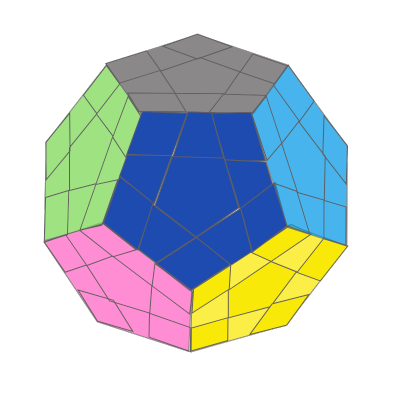
Step-by-Step Solution for the Megaminx Cube
Step 1: Understanding the Notation
The notation for the Megaminx is similar to that of the 3x3x3 cube but adapted for its twelve sides:
- R (Right): Rotate the right face clockwise.
- R’ (Right Inverse): Rotate the right face counterclockwise.
- L (Left): Rotate the left face clockwise.
- L’ (Left Inverse): Rotate the left face counterclockwise.
- U (Up): Rotate the upper face clockwise.
- U’ (Up Inverse): Rotate the upper face counterclockwise.
- D (Down): Rotate the bottom face clockwise.
- D’ (Down Inverse): Rotate the bottom face counterclockwise.
- F (Front): Rotate the front face clockwise.
- F’ (Front Inverse): Rotate the front face counterclockwise.
- Rotations: Indicate turning the entire cube to change the perspective.
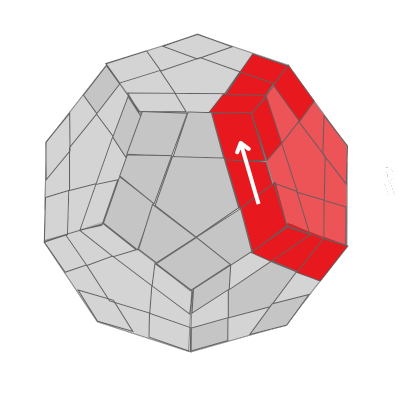

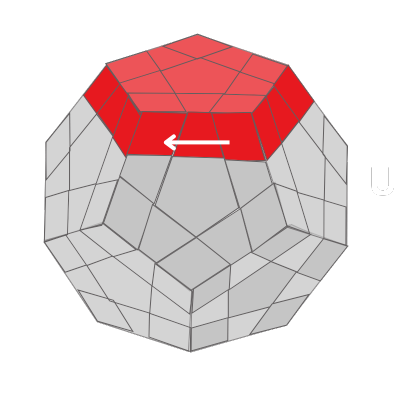

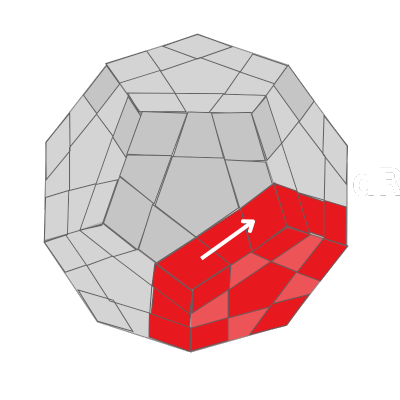
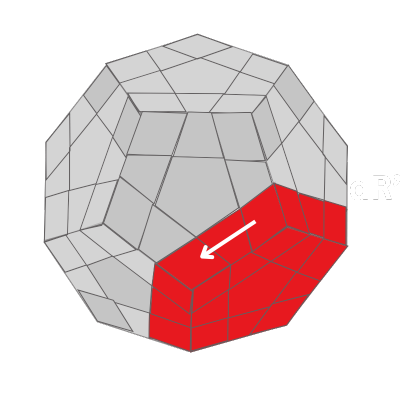

Step 2: Solving the First Layer (Create a Star)
- Solve the White Star:
- Begin by solving a star on the white face. This is the equivalent of solving the cross on a 3x3x3 cube. The white face will have a star pattern formed by aligning five white edge pieces with their respective center pieces.
- Algorithm to Position an Edge Piece: If an edge piece needs to be moved to the white face, use F U R U’ R’ F’ to position it correctly.
- Align the Edge Pieces:
- Make sure that each edge piece is correctly positioned by matching its color with the center piece on the adjacent face. Adjust as necessary until all edges are aligned with their correct center pieces.
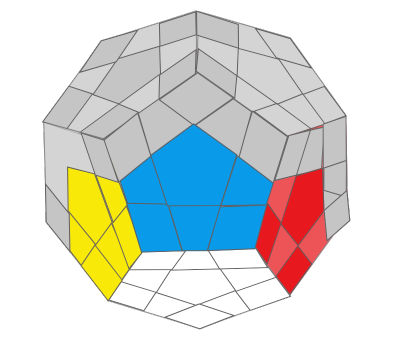
Step 3: Solving the First Two Layers
- Position the First Layer Corners:
- After creating the star, position the five corner pieces that belong to the first layer (white layer). Place each corner piece in its correct position by matching its colors with the corresponding center pieces.
- Algorithm to Insert a Corner Piece: R U R’ U’
- Solve the Second Layer Edges:
- With the white face complete, solve the edges of the second layer by inserting them one by one. Make sure each edge is correctly positioned between two corners.
- Algorithm to Insert an Edge: U R U’ R’ U’ F’ U F
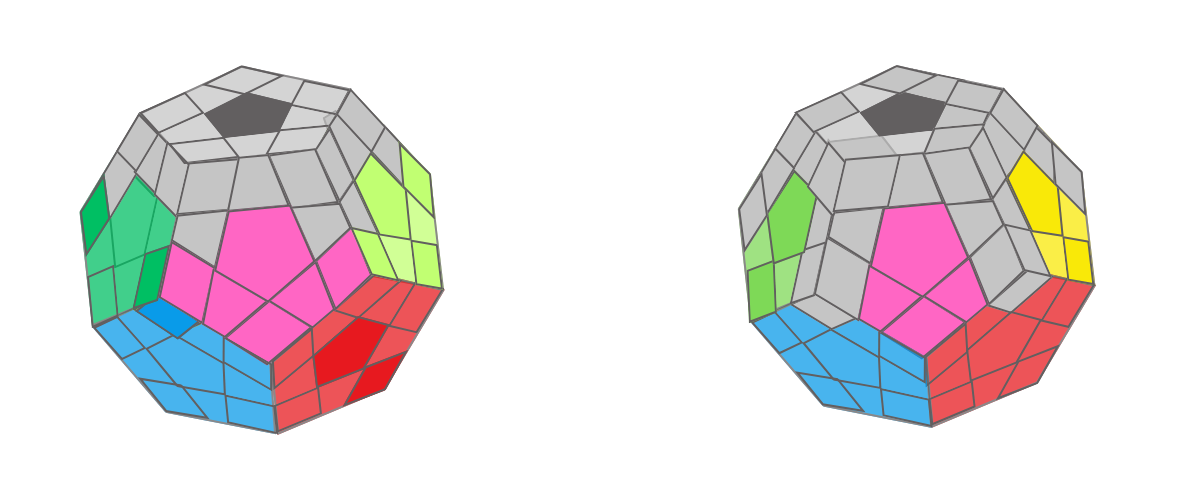
Step 4: Solving the Last Two Layers (L2L)
- Create the Last Layer Star (Yellow Star):
- Focus on solving the last layer by first forming a yellow star. The star will have five yellow edges in place around the yellow center piece.
- Algorithm for Yellow Star Formation:
- If there is an L shape: F R U R’ U’ F’
- If there is a line: F R U R’ U’ F’
- Adjust as needed until a yellow star is formed.
- Position Last Layer Edges:
- After the yellow star is formed, permute the last layer edges to match their correct color centers.
- Algorithm to Position the Edges: U R U’ L’ U R’ U’ L
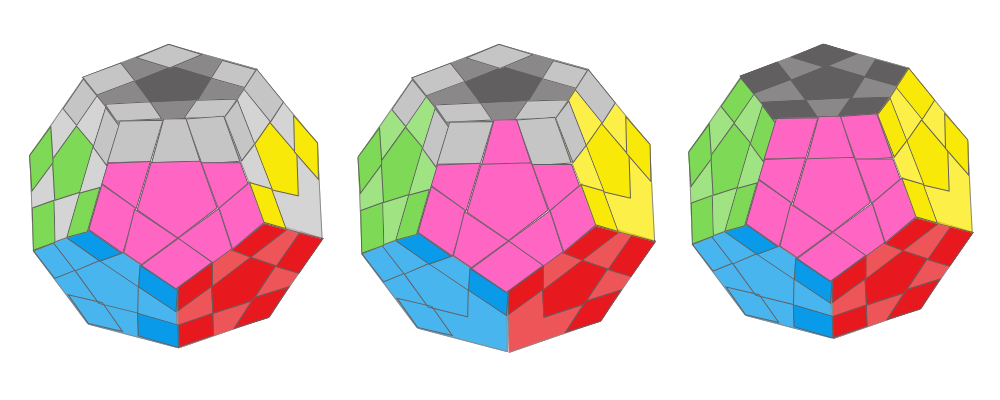
Step 5: Solving the Last Layer (OLL and PLL)
- Orient the Last Layer Corners (OLL):
- Orient all the last layer corners so that the yellow face is complete.
- Algorithm for Corner Orientation: R U R’ U R U2 R’
- Permute the Last Layer Corners (PLL):
- After orienting the corners, permute them to their correct positions.
- Algorithm for Permuting Corners: U R U’ L’ U R’ U’ L
- Permute the Last Layer Edges (PLL):
- Once the corners are positioned, permute the last layer edges to solve the Megaminx.
- Algorithm for Edge Permutation: U R U’ R’ U R’ U R U2 R’ U

Additional Tips and Tricks:
- Practice Recognition:
- Unlike the 3x3x3 cube, the Megaminx has many pieces to recognize and solve. Practice recognizing the pieces and where they belong to speed up the solving process.
- Take Advantage of Similar Algorithms:
- Many algorithms used in the 3x3x3 cube also apply to the Megaminx. Familiarize yourself with these algorithms to make solving more intuitive.
- Keep Your Cube in View:
- Since the Megaminx has twelve faces, it can be easy to lose track of the faces. Keep the solved face in front of you to ensure you stay oriented correctly.
- Use Efficient Finger Tricks:
- Use finger tricks to execute algorithms more efficiently. This will help reduce solving time and keep you more comfortable while solving larger puzzles.
Conclusion:
The Megaminx is a challenging puzzle that requires patience and practice. By mastering the basic algorithms and understanding how to recognize and place each piece, you will be able to solve the Megaminx efficiently. Remember, it is essential to practice and familiarize yourself with the unique movements and algorithms.
Note: WCA (World Cube Association) also recognizes Blindfolded solves for various cubes such as the 2x2x2 and 3x3x3. For more information and tutorials dedicated to solving such cubes blindfolded,
